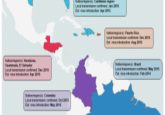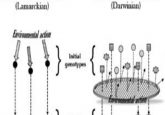Evolutionary relationship between extinct giant ape and living orangutan revealed

Researchers have reconstructed the evolutionary relationship between a 1.9 million-year-old extinct, giant primate and the living orangutan using the oldest genetic material ever recovered from a fossil in a subtropical area.
In a groundbreaking study, researchers have utilized protein sequencing to obtain genetic information from an extinct, giant primate and demonstrated the evolutionary relationship that exists between this species and the living orangutan.
Gigantopithecus blacki, was a 3-meter-tall, 600kg giant primate that lived in a subtropical area in Southern China. Its evolutionary relationships to other primate species have been hard to identify as no complete skull has yet been discovered.
This study, published recently in Nature, was groundbreaking within the field of evolutionary biology as it utilized the oldest genetic material that has ever been retrieved from a warm, humid environment. The thermal age of these protein sequences was estimated to be 5-times greater than that of any previous published mammalian proteome.
“Previous attempts to understand which could be the living organism most similar to G. blacki could only be based on the comparison of the shape of the fossils with skeletal reference material from living great apes,” explained senior author Enrico Cappellini (University of Copenhagen, Denmark). “Ancient DNA analysis was not an option, because G. blacki went extinct approximately 300,000 years ago, and in the geographic area G. blacki occupied no DNA older than approximately 10,000 years has been retrieved so far.”
With state-of-the-art mass spectrometers, researchers sequenced proteins retrieved from dental enamel from a 1.9 million-year-old G. blacki molar, initially discovered in Chuifeng Cave, China, in 1935. This technique was developed in a previous study, also published recently in Nature.
- Prehistoric mega-herbivore decline: a case of climate not primate
- CRISPR/Cas9 gene editing in primates
- Transcription factor binding: an evolutionary landmark?
From this, they demonstrated that G. blacki is a sister clade to living orangutans (genus Pongo) with a common ancestor about 12–10 million years ago. This implies that the divergence of the two clades forms part of the Miocene radiation of great apes.
“By sequencing proteins retrieved from dental enamel about 2 million years old, we showed it is possible to confidently reconstruct the evolutionary relationships of animal species that went extinct too far away in time for their DNA to survive till now,” Cappellini remarked. “In this study, we can even conclude that the lineages of orangutan and G. blacki split up about 12 million years ago.”
Not only do these results shed light on the complex evolutionary relationships that exist between extinct and extant primate species but also suggest the possibility of extending our understanding of human evolution into geographical areas and times previously considered impossible.
“Until now, it has only been possible to retrieve genetic information from up to 10,000-year-old fossils in warm, humid areas,” commented the study’s first author, Frido Welker (University of Copenhagen). “This is interesting, because ancient remains of the supposed ancestors of our species, Homo sapiens, are also mainly found in subtropical areas, particularly for the early part of human evolution. This means that we can potentially retrieve similar information on the evolutionary line leading to humans.”





